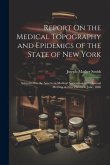The present study is to examine evolution of the public health during nineteenth and twentieth century as part of colonial expansion and consolidation of power and spread of recurrent epidemics such as cholera, malaria, small-pox, kala-azar and plague took huge toll of mortality of both Europeans and natives in Northeastern province. It had affected the social, political and economic order of colonial state. Under such circumstances, health policies were evolved, implemented and stand as a tool for British. With western medical interventions evolved new practices and new ideals to control epidemics diseases which need to be understand as a part of exploratory and regulatory mechanism of colonial rule. To keep in mind the complex nature of colonial mechanism, the present study explores how colonial interests led to expand the purview of public health policies and practices from colonial enclaves to general public during nineteenth and early twentieth century's in Northeast India. Colonial expansion and consolidation in Northeast frontier witnessed several epidemic diseases. Frequent outbreak of epidemics in their process of expansion and conquest led to devastating impact on European army and the lives of the population and took heavy toll of population. Among all the epidemics encountered, the most devastating diseases were cholera, kala-azar, small-pox and malaria. Cholera, a dreaded disease appeared frequently since 1820s. It swept the lives of the plain population in Tippera, Manipur, Dacca, Sylhet and in Assam. At an average until 1920s, more than twenty thousand lives were carried off by cholera in every five years. Another disease, Kala-azar, also known as 'Assam Fever' had also swept the lives of the populace since 1880s.



![Epidemics Resulting From Wars [microform] Epidemics Resulting From Wars [microform]](https://bilder.buecher.de/produkte/66/66198/66198110m.jpg)




